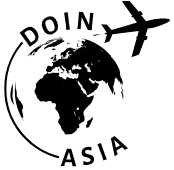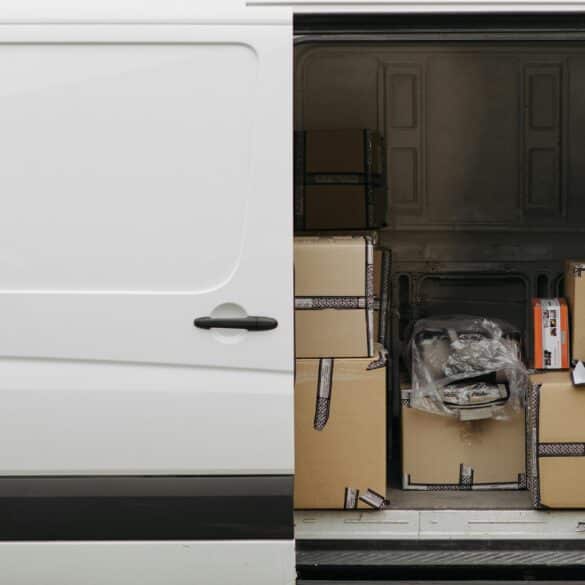Kaizen Strategies: How Japan’s Methods Transform Manufacturing Quality
Ever found yourself asking, “How do Japanese manufacturers stay so relentlessly ahead?” You’re not alone. Maybe, like me, you’ve stared at reports of Toyota’s efficiency with a mix of awe and skepticism, wondering what the rest of the business world is missing. The answer, if I’m honest, has a lot to do with three syllables: kaizen—a concept that’s talked about everywhere, but lived out, daily, in Japanese industry in a way that’s, well, different. Ten years ago, before I’d ever spent a week on a Japanese factory floor, I thought kaizen was just a fancy word for “improvement.” Turns out, it’s a philosophy, a ritual, a culture, and a never-ending journey. Let me show you why it’s fundamentally changed global productivity and quality—but more importantly, how it’s still evolving and what we all can steal from Japan’s playbook.
Understanding Kaizen’s Core Principles
When people first challenge the topic of continuous improvement, the word “kaizen” comes up quickly—sometimes with reverence, sometimes with a side-eye. Here’s what surprises most newcomers: kaizen isn’t a project, it’s a mindset. The literal translation is “change for the better” or “continuous improvement,” but in Japan, it’s the pulse of every day, every meeting, every product line. Not a week goes by that a Japanese manager isn’t asking, “How can we make this just a bit better?”1
Key Kaizen Principles (as I’ve experienced them):
- Small, incremental change beats big, radical overhaul.
- Everyone participates: Every operator, manager, and supplier has a voice.
- Process over product: Fix the system before you blame a worker or a widget.
- Problems are golden opportunities.
- Standardize, then improve again—ad infinitum.
Are these just slogans? Here’s where personal context matters. I remember—painfully—my first kaizen workshop in Nagoya. Half an hour into the session, I’d already used the word “best practice” three times. My host politely corrected me: “In kaizen, today’s ‘best’ is never tomorrow’s goal.” That stuck. It’s humbling, really, and a profound contrast to Western approaches that often fetishize major leaps or “moonshots.”2
Saviez-vous?
In Japan, more than 90% of manufacturing employees participate in formal kaizen activities each year, according to the Japanese Ministry of Economy, Trade, and Industry. This rate far exceeds participation in most Western continuous improvement programs.3
Cultural Roots and Global Spread
Kaizen’s origins? They trace back post-WWII—ironically, with a crucial assist from American experts like W. Edwards Deming and Joseph Juran, who helped seed early statistical quality control training in Japan4. But what the Japanese did next… well, it’s sort of miraculous. They absorbed, remixed, and transformed these lessons with their own cultural values: humility, perseverance, and—above all—teamwork.
Having witnessed global attempts at “kaizenization,” I can tell you: transplanting the principles is never as simple as copying a tool. Japanese teams emphasize genba—the “real place” where work happens—which means senior leaders, not just supervisors, routinely walk production lines and solicit observations directly from operators, not just mid-management5.
International adoption has morphed the term, at times diluting it, sometimes expanding it. More on that in a bit. But one thing’s for sure—the genuine article remains, at its core, stubbornly Japanese and persistently universal.
“Kaizen is not a technique but a way of thinking—an unending pursuit of perfection through daily improvements.”
Kaizen Tools, Methods, and Daily Practice
Before you glaze over at the mere mention of “toolbox,” let me clarify—kaizen’s real magic isn’t in what’s written on whiteboards. It’s in how problems are attacked and how people are empowered. That being said, there are a handful of practical methods that, honestly, changed the way I approached consulting with lean teams around the world.
Kaizen in Practice: Must-Know Tools
- 5S: Sort, Set in order, Shine, Standardize, Sustain—translates to cleaner, safer, more predictable workspaces.6
- PDCA Cycle: Plan, Do, Check, Act—the never-ending circle for improvement that I used to dismiss as “too simple” until I saw it delivering massive ROI at Toyota.7
- Genba Walks: Leadership’s responsibility to be present where real value is created.
- Standard Work: Documenting and stabilizing current best practices—not as an endpoint, but as a new baseline.
- Kaizen Events (or Blitz): Short, focused improvement bursts with cross-functional teams.
I once shadowed a chief engineer in Osaka as he performed a “genba walk.” Every 20 minutes, he paused, asked operators what the real bottleneck was, and took handwritten notes—no laptop, no corporate jargon. The moment that struck me wasn’t when an obvious waste was discovered, but when a line worker quietly mentioned, “We waste 8 minutes daily looking for wrenches.” Simple, but multiplied across shifts, it matters.
| Kaizen Tool | But | Résultat typique | Exemple |
|---|---|---|---|
| 5S | Organize Workplace | Reduced Waste | +30% safety improvement |
| PDCA | Iterative Problem Solving | Higher Quality | 15% defect reduction |
| Genba Walks | Direct Observation | Faster Issue ID | 75+% improvement ideas |
| Kaizen Events | Rapid Change Implementation | Quick Wins | 5-day setup reduction |
Quick wins—let’s talk about those. Teams often assume kaizen means painstakingly slow. In reality, some of the most dramatic cultural turnarounds I’ve seen (especially in plants struggling post-pandemic with high turnover) came from 3-day kaizen blitzes rallying everyone from janitors to plant managers to reimagine workflow.8
Kaizen’s Impact on Productivity and Quality
“Before implementing kaizen, our plant suffered from constant overtime. Now, we finish shifts on time, and our defect rate has dropped by 40%.”
What excites me most about sharing kaizen outside Japan is its dual magic: productivity jumps, quality surges. Let’s get precise—numbers tell the best part of this story.9
Typical Outcomes in Kaizen-Driven Factories:
- 30% reduction in wastage10
- Up to 60% faster changeovers (SMED principles)
- Minimum 20% productivity boost within the first year
- Dramatic drop in worker injuries and absenteeism
- Customer complaints routinely cut in half
These aren’t “once-in-a-blue-moon” stories. They’re validated by McKinsey and the Japan Productivity Center, but, more crucially, I’ve personally seen U.S. plants in the Midwest replicate these outcomes—provided they embrace the daily grind and humility of Japanese-style continuous improvement.11
Real-World Case Studies
“Show, don’t tell”—that’s what my first factory mentor told me. Real transformation isn’t neat, but there are three stories I always share. Actually, let’s walk through them quickly.
- Toyota “Andon Cord”— Anyone on the line can stop production to flag an issue. Initially, this led to more stops, but defect rates dropped 67% within a year.12
- Canon’s Suggestion System— Over one million employee suggestions implemented over a decade, resulting in cost reduction and process innovations far exceeding R&D teams’ projections.
- U.S. Steel Plant (Client Experience)— With daily genba walks and 5S, downtime dropped from 18% to 9% in 100 days—a transformation even corporate skeptics admitted was “remarkable.”
What’s clear? Kaizen’s power lives not just in checklists or frameworks, but in shifting mindsets. That, honestly, is the hardest—and most rewarding—part to replicate elsewhere.

Challenges of Kaizen Adoption Outside Japan
Now, here’s the tricky bit. If I had a dollar for every time a Western manager said, “We tried that, but people just gamed the system,” I could retire early. The reality? Adopting kaizen outside Japan runs into cultural and operational headwinds. For starters, many companies mistake “continuous improvement” for little more than a “suggestion box.” Kaizen, done right, is participatory, persistent, and—above all—humble day-to-day work.13
Hard Truths (and Lessons I Learned the Hard Way):
- Lack of senior leadership engagement derails transformation—every time.
- Rewarding big ideas only (instead of small wins) stalls momentum.
- Misunderstanding genba—“managing from behind glass” almost always kills kaizen.
- Fear of failure (and management’s aversion to public mistakes) keeps problems hidden.
Three years ago, I watched a major European carmaker’s kaizen initiative stall because they insisted on executive-only improvement sessions. Not surprisingly, the plant floor saw it as detached, and (guess what?) suggestion rates collapsed. Conversely, when front-line engagement is real—and leadership honors even “duh” improvements—kaizen roots itself and grows.
“Kaizen work must begin and end where the value is created—the shop floor, not the boardroom.”
That quote hangs (figuratively and, once, literally) in my office. It’s a reminder: kaizen fails when culture reverts to status games and fear of embarrassment.
The Future of Kaizen Globally
Here’s where things get interesting. If you thought kaizen’s best years were in the 1980s, think again. The movement is, in fact, evolving. Two big shifts I’ve observed in the last five years:
- Digital Tools: Integrating IoT and data analytics has turbocharged real-time kaizen. A line worker can now spot deviation and submit evidence, photos, and real-time process feedback—so “continuous improvement” becomes instant.14
- Sustainability: Modern kaizen weaves in not just cost, quality, and speed, but also climate impact. Japanese auto suppliers now use kaizen teams to drive CO2 reduction as a core KPI.15
One last trend (for now): post-pandemic resilience. When COVID-19 rattled global supply chains, the companies that bounced back fastest often were the ones with deep kaizen DNA—rapid cross-training, imaginative process pivots, and, yes, relentless documentation of changes as they happened.16
Country Fact: Global Outreach
The UNIDO (United Nations Industrial Development Organization) reports that Japanese engineers have directly led kaizen workshops in 60+ countries, resulting in measurable productivity and safety boosts from Turkey to Ethiopia.17
“Kaizen is not just about factories. It is about innovation for humanity—and a structure for making problems visible, everywhere, every day.”
In plain English: kaizen’s ultimate value isn’t just in better widgets or cheaper products. It’s in building cultures willing—even eager—to see problems, share them, and solve them. And that’s a global advantage, not just a Japanese one. If I sound evangelical, it’s because, having helped implement kaizen both the right and wrong way, I’ve seen the wholesale mindset shift that’s possible.
Practical Takeaways and Reflections
Actionable Kaizen Steps for Any Plant (What Actually Works):
- Start with simple, regular genba walks. No fancy software—just presence and listening.
- Celebrate small improvements openly, regardless of author or scope.
- Document and standardize “best” practices, but treat them as temporary waypoints.
- Create blameless feedback loops—problems are crowd-sourced learning opportunities.
- Invest in cross-training to build real flexibility and frontline ownership.
Honestly, the simplest lesson from Japan is that improvement isn’t a one-off. Genuine kaizen is about showing up, daily, and nudging the bar higher, together. You can copy the tools, but unless you build a culture where anyone—yes, anyone—can surface a problem without fear, the magic fizzles.
“Without continuous improvement, there can be no sustained success.”
Looking back, every manufacturing environment I’ve advised that thrived on kaizen didn’t “install a program”—they made improvement inevitable. That’s tough. That’s human. It means you’ll wrestle with culture and inertia, but it’s absolutely possible.
Saviez-vous?
During Japan’s lost decade of economic stagnation (the 1990s), companies like Toyota, Canon, and Fanuc doubled down on kaizen to maintain—and even grow—share in global markets.18
Parting Thoughts: Your Kaizen Journey Starts Here
So, where should you start? With genuine humility. Kaizen’s power is, more than anything else, collective. No individual genius required—just a willingness to ask, “How can we make this a fraction better, today?” Over time, those fractions add up. My advice, after years working with companies at every stage of this journey: lean in, get vulnerable, and expect to be surprised by the simplest ideas. If that feels radical, good. That’s where the real work begins.
Ready to take action?
Schedule a cross-team kaizen event next month—even on the smallest scale—to jumpstart the process. Then, track your first “tiny win.” You might just find that’s where big change lives.
Références



